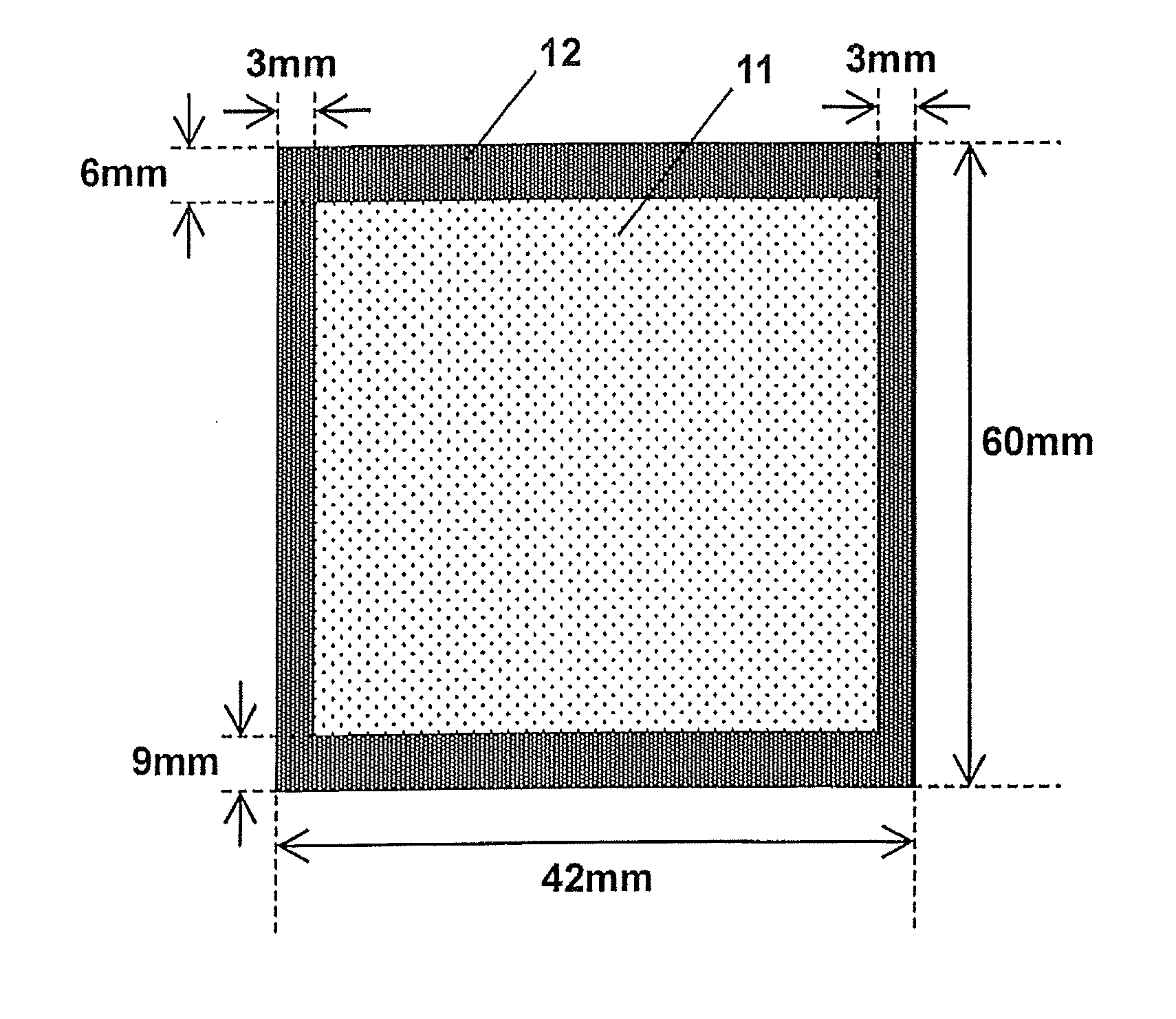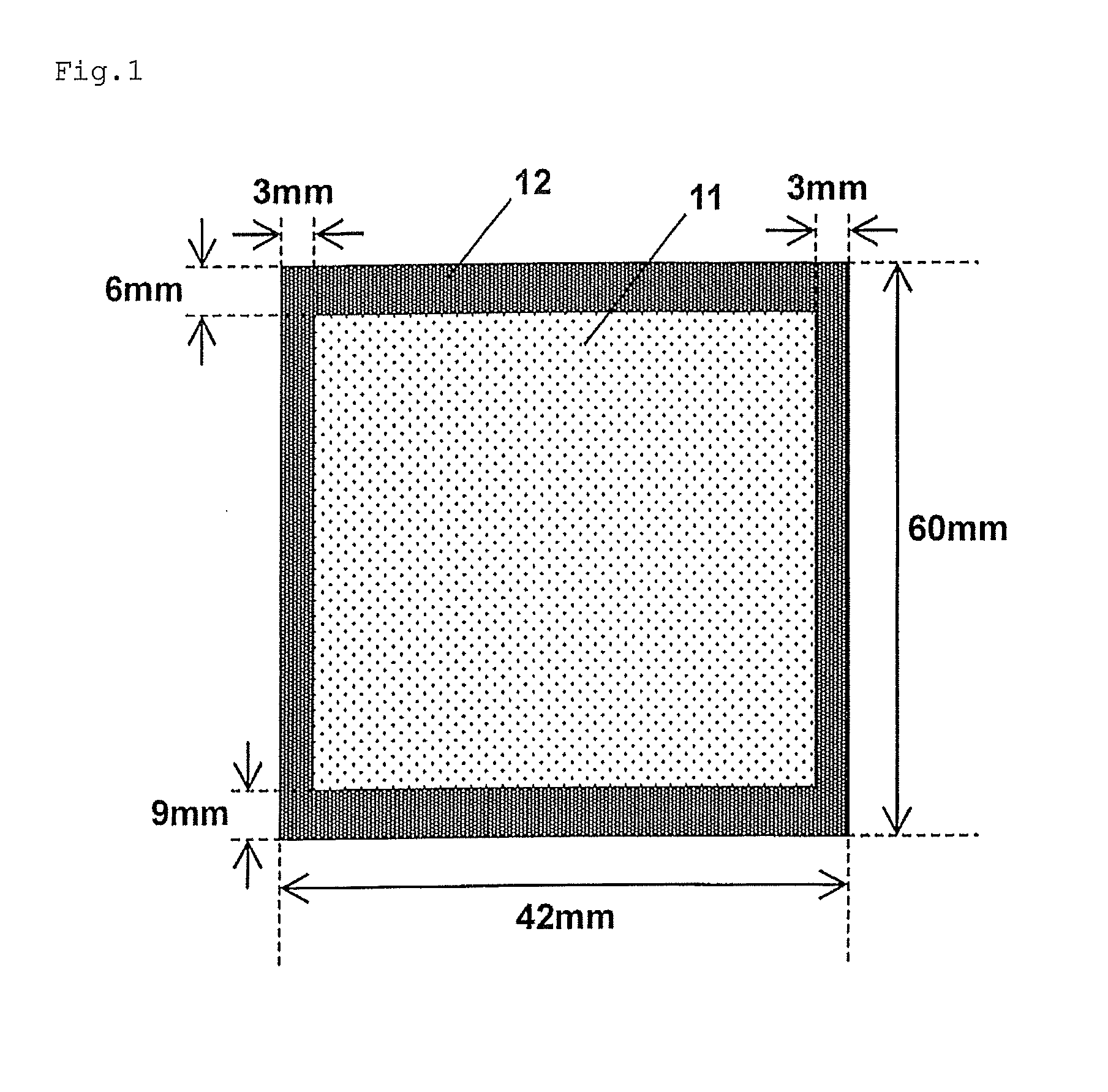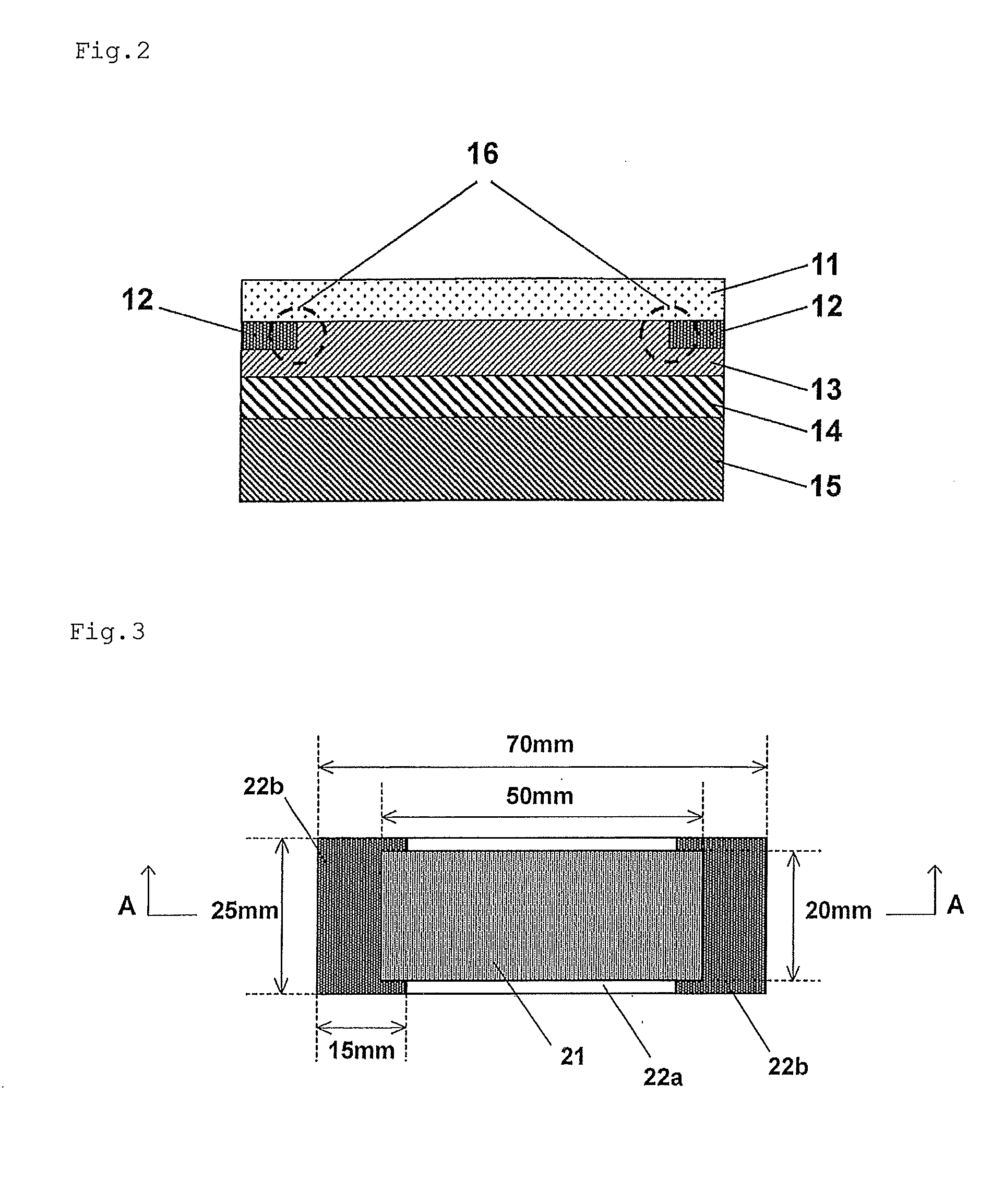Optical pressure-sensitive adhesive sheet
- Summary
- Abstract
- Description
- Claims
- Application Information
AI Technical Summary
Benefits of technology
Problems solved by technology
Method used
Image
Examples
example 1
[0159]In a separable flask were placed 69.7 parts by weight of 2-ethylhexyl acrylate (2EHA), 10 parts by weight of 2-methoxyethyl acrylate (MEA), 13 parts by weight of 2-hydroxyethyl acrylate (2HEA), 6 parts by weight of N-vinyl-2-pyrrolidone (NVP), and 1.3 parts by weight of N-hydroxyethylacrylamide (HEAA) as monomer components, 0.1 part by weight of 2,2′-azobisisobutyronitrile as a polymerization initiator, and 200 parts by weight of ethyl acetate as a polymerization solvent, followed by stirring for one hour with the introduction of nitrogen gas. After removing oxygen from the polymerization system in this manner, the mixture was raised in temperature to 63° C., reacted for 10 hours, diluted with ethyl acetate, and thereby yielded an acrylic polymer solution having a solids concentration of 30 percent by weight.
[0160]With reference to Table 1, a pressure-sensitive adhesive composition (solution) was prepared by adding, to 100 parts by weight of the acrylic polymer, 0.2 part by we...
example 2
[0161]A double-coated pressure-sensitive adhesive sheet (substrate-less double-coated pressure-sensitive adhesive sheet) including a pressure-sensitive adhesive layer having a thickness of 50 μm was obtained by the procedure of Example 1, except for using, as monomer components, 69.7 parts by weight of n-butyl acrylate (BA), 10 parts by weight of 2-methoxyethyl acrylate (MEA), 13 parts by weight of 2-hydroxyethyl acrylate (2HEA), 6 parts by weight of N-vinyl-2-pyrrolidone (NVP), and 1.3 parts by weight of N-hydroxyethylacrylamide (HEAA), and except for not using the silane coupling agent “KBM-403,” as indicated in Table 1.
example 3
[0162]A double-coated pressure-sensitive adhesive sheet (substrate-less double-coated pressure-sensitive adhesive sheet) including a pressure-sensitive adhesive layer having a thickness of 50 μm was obtained by the procedure of Example 1, except for using, as monomer components, 75 parts by weight of 2-ethylhexyl acrylate (2EHA), 11.5 parts by weight of 2-methoxyethyl acrylate (MEA), 5 parts by weight of 2-hydroxyethyl acrylate (2HEA), 7 parts by weight of N-vinyl-2-pyrrolidone (NVP), and 1.5 parts by weight of N-hydroxyethylacrylamide (HEAA), as indicated in Table 1.
PUM
| Property | Measurement | Unit |
|---|---|---|
| Temperature | aaaaa | aaaaa |
| Temperature | aaaaa | aaaaa |
| Temperature | aaaaa | aaaaa |
Abstract
Description
Claims
Application Information
 Login to View More
Login to View More - R&D Engineer
- R&D Manager
- IP Professional
- Industry Leading Data Capabilities
- Powerful AI technology
- Patent DNA Extraction
Browse by: Latest US Patents, China's latest patents, Technical Efficacy Thesaurus, Application Domain, Technology Topic, Popular Technical Reports.
© 2024 PatSnap. All rights reserved.Legal|Privacy policy|Modern Slavery Act Transparency Statement|Sitemap|About US| Contact US: help@patsnap.com










